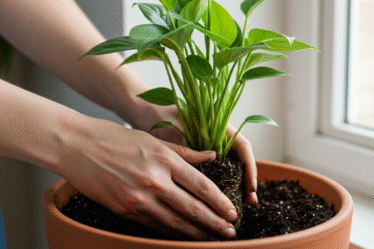
Fungus gnats – those tiny, dark flies flitting around your houseplants – are more than just a nuisance. They can be a real threat to your leafy companions’ health. As a horticultural consultant, I’ve seen firsthand the damage these pests can inflict, and I’m here to share effective strategies to conquer this gnat annoyance and restore your plants’ vitality.
These gnats thrive in moist, organic-rich soil, precisely the environment we strive to create for our beloved houseplants. Their larvae feed on decaying organic matter, but they also attack the delicate roots of young plants, leading to stunted growth and increased susceptibility to diseases. Overwatering is often the culprit, creating the perfect breeding ground for these pests. So, how do we combat this insidious enemy without harming our plants?
The first step is to allow the top inch or two of soil to dry out completely between waterings. This disrupts the gnats’ life cycle by making the environment less hospitable for their larvae. Consider using bottom watering, which delivers water directly to the roots while keeping the surface soil drier. This method also encourages deeper root growth, making your plants more resilient.
Introducing beneficial nematodes to the soil is another powerful weapon in your arsenal. These microscopic organisms prey on fungus gnat larvae, effectively controlling their population. You can purchase nematodes online or at garden centers. Simply mix them with water and apply to the soil according to the package instructions. For a more natural approach, consider using sticky traps. These yellow, sticky cards attract adult gnats, preventing them from laying eggs and further infesting your plants. Place the traps near the affected plants, ensuring they don’t touch the leaves.
In severe infestations, you might need to repot your plants. Carefully remove the plant from its pot, gently shake off the old soil, and repot it in fresh, well-draining potting mix. This eliminates a significant portion of the gnat population and provides a clean start for your plant. Remember to inspect new plants carefully before introducing them to your collection to avoid bringing in unwanted guests.
Dealing with fungus gnats can be frustrating, but with a combination of preventative measures and targeted treatments, you can effectively eliminate these pests and create a thriving environment for your houseplants. By understanding their life cycle and implementing these strategies, you’ll be well on your way to conquering gnat annoyance and enjoying the beauty of healthy, vibrant plants.



